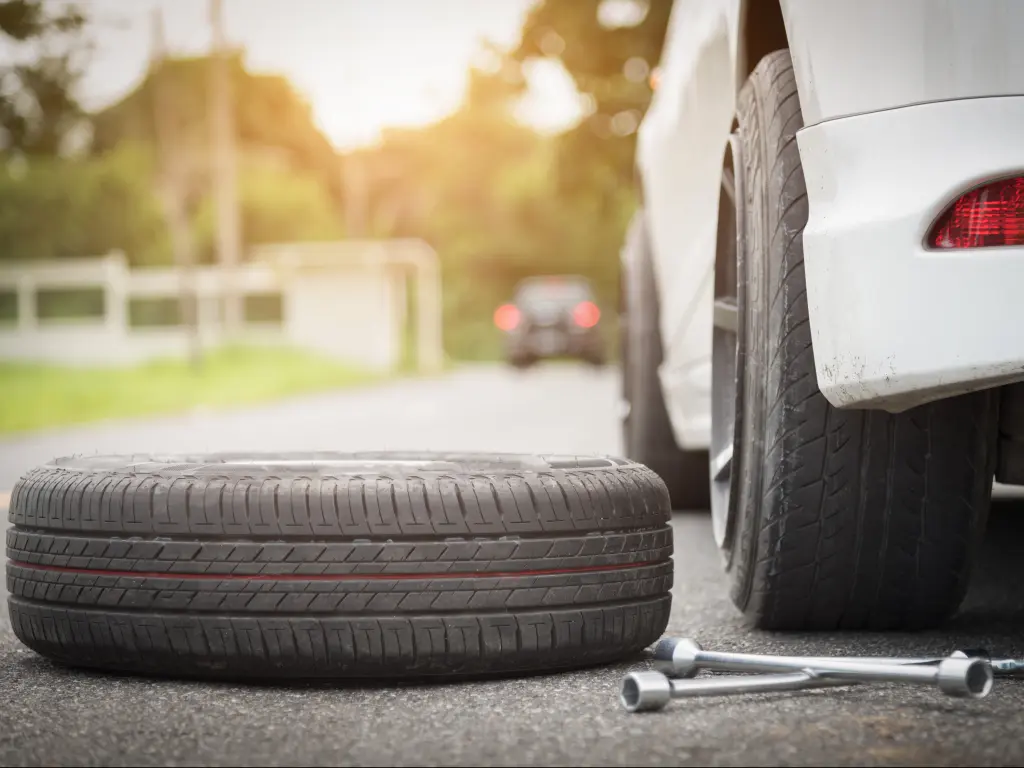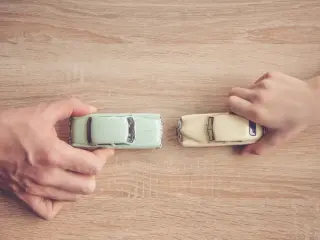How Fast Can You Drive On A Spare Tire?
If you've just had a puncture or damaged your wheel, you may be wondering how fast can you drive on a spare tire. Some people may say you can drive as fast as regular highway speeds, others say you have to crawl along so what's the real answer?
You should drive on a spare tire at a maximum speed of 50 miles per hour. Driving faster on a donut type spare tire can cause damage to your car and it is better to drive as slowly as possible while the spare tire is on your car.
If you want to know why it's crucial to not drive faster than 50 mph on a spare tire and some important things to know.
Maximum speed for driving on a spare tire
Although this may vary a little, in the vast majority of cases, the maximum speed you can drive on a spare tire is 50 mph.
Usually you will find this marked clearly on the side of the spare tire in big writing and the equivalent note in your car manual. Some cars may have slightly different maximum speeds depending on the type of spare tire and the car itself. Make sure you check both the tire and the manual to make sure and pick the lower speed of the two if they are different.
Although many people do not take the recommendation seriously, sticking to the maximum speed of 50 mph is very important - the message on the tire is not there because the manufacturer had nothing else to write.
If you are in the unfortunate situation where you have to drive on a spare tire, make sure you stick to this limit and do not drive faster even if you are on a highway. If needed, drive in the slow lane and use hazard lights if permitted in your state (states like Alaska, Illinois, Louisiana and some others do not allow driving with hazard lights for example).
What will happen if you drive too fast on a donut spare tire?
It may seem like a very minor rule, but driving too fast on a spare tire can be incredibly dangerous as well as expensive.
Firstly, if you drive above the 50 mph limit or the one stated on the tire, the biggest risk is that the tire will fail. Although the risk may not be great and you are unlikely to immediately suffer issues by driving at 55 mph, driving significantly above the limit or too fast for a long time can cause failure.
A spare tire failure can be much worse than a regular tire puncture or blowout. The spare wheel is much lighter and smaller and the tire does not have additional safety features you will find in full size tires like reinforced sidewalls.
If you drive too fast and your spare tire fails, you run the risk of losing control of your car and significant damage to the axel and other parts of your car even without accounting for the potential damage caused by a crash.
The other big thing to remember is that if you drive too fast on a spare tire, you may well be breaking the law. Although most states and countries do not have specific laws about spare tires, you may be issued a fine or get into worse trouble for driving without due care or a similar infringement.

Driving too fast on a spare tire will damage your car
The other very important thing to know is that driving on a spare tire is generally bad for your car and the faster you drive the worse it is.
Even without any of the above taking place, when you drive on a spare tire, that corner of your car is having a completely different tread pattern and is a completely different size to other wheels.
This means that this tire spins at a completely different rate - this has a noticeable impact on your steering, differential, suspension and other car parts. If you drive too fast, the impact can be significantly greater and you can cause significant damage to your car as a result.
The spare tire also has very little grip - this means that your ability to control the car and steer will be jeopardized and even more so if the conditions are wet, cold or icy.
What is the optimal speed for driving on a spare tire?
Although 50 mph is usually the limit, it really is not the speed you should be aiming for when driving on a spare tire.
As I mentioned above, the faster you drive on a spare tire, the more impact you will have on your car and the higher the risk of causing damage or have an accident.
As a result, it is a good idea to drive below 50 mph and proceed with caution when you do have a spare tire. Drive slowly, but make sure you do not create a hazardous situation by driving too slow for the road or conditions that may create unnecessary risks in people overtaking or having to slow down significantly.
If you have broken down on a high speed limit road, it is advisable to come off the road as soon as is practical and make your way to the nearest car repair or tire replacement center. On local roads, you can comfortably drive at 20 to 30 miles per hour which will not cause issues to other drivers and provide greater safety.
Important things to note about driving on a spare tire
Although spare tires do say that you can drive for as long as 50 or 70 miles on them, you really want to make sure that you replace it with a regular tire as quickly as possible.
pare tires have relatively little tread and can wear very fast - their only real purpose is to get you to a place where you can repair or replace the proper tire, not drive to work and back for a few days.
Remember some basic tips - do not accelerate hard, drive fast and be careful when cornering if you are on a spare tire. Accelerating and sharp changes in direction are as bad as driving too fast on a spare tire - you will be putting too much pressure on it increasing the risk of failure and affecting other parts of your car.
This especially applies if you drive a more powerful car, a heavier vehicle or if you have a car with a more complex setup like a limited slip or electronic differential.
One last big reason to not drive fast or far on a spare tire is how much use you will get out of that spare tire.
If you drive a full 50 miles or drive fast with hard acceleration, your spare tire may only last once and you'll have to replace it as well as fit a new tire.
If you carefully make your way to the nearest repair shop at low speed, the likelihood is that your spare tire will be perfectly fine to go back into your trunk so you can use it next time you have a puncture.







